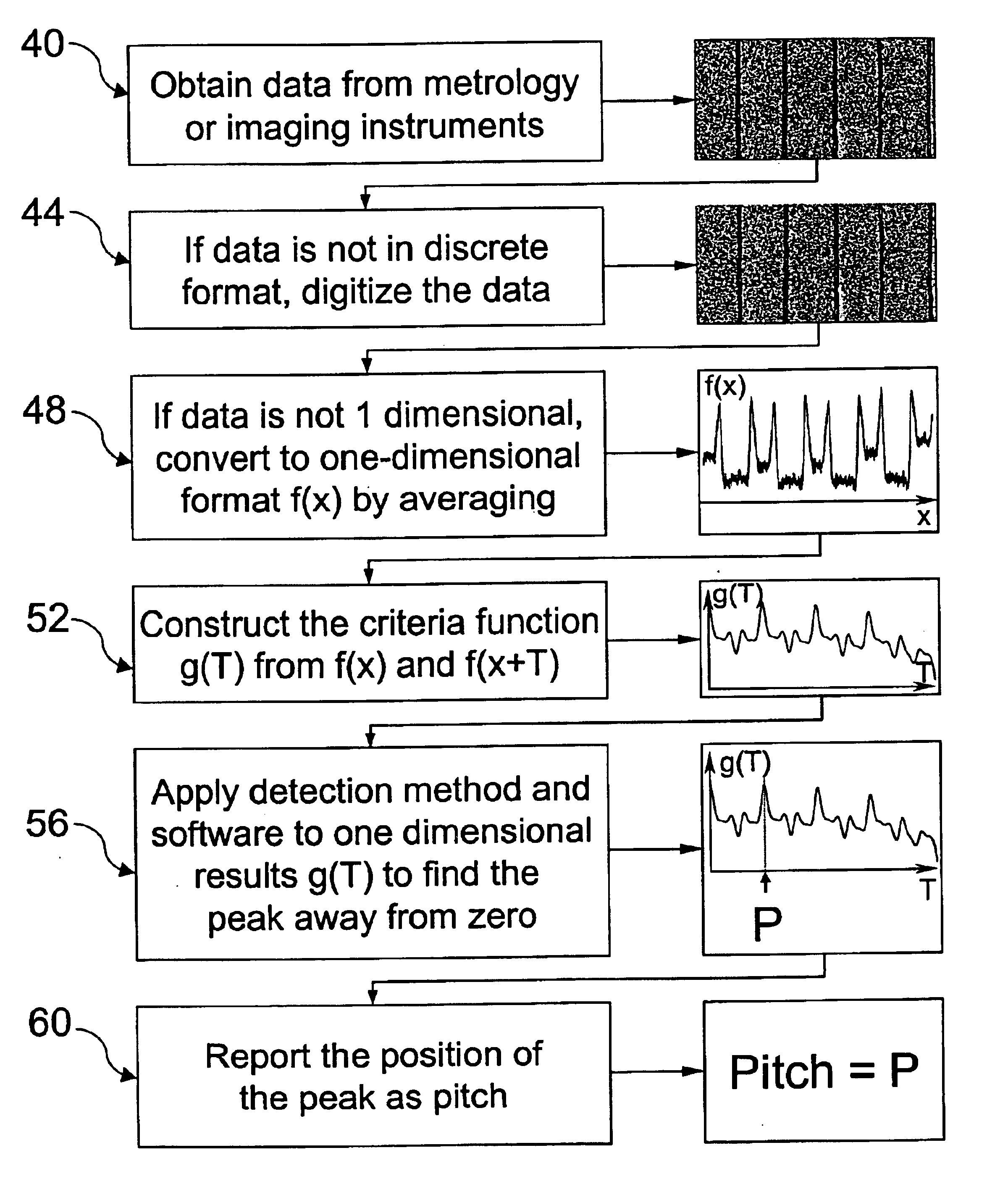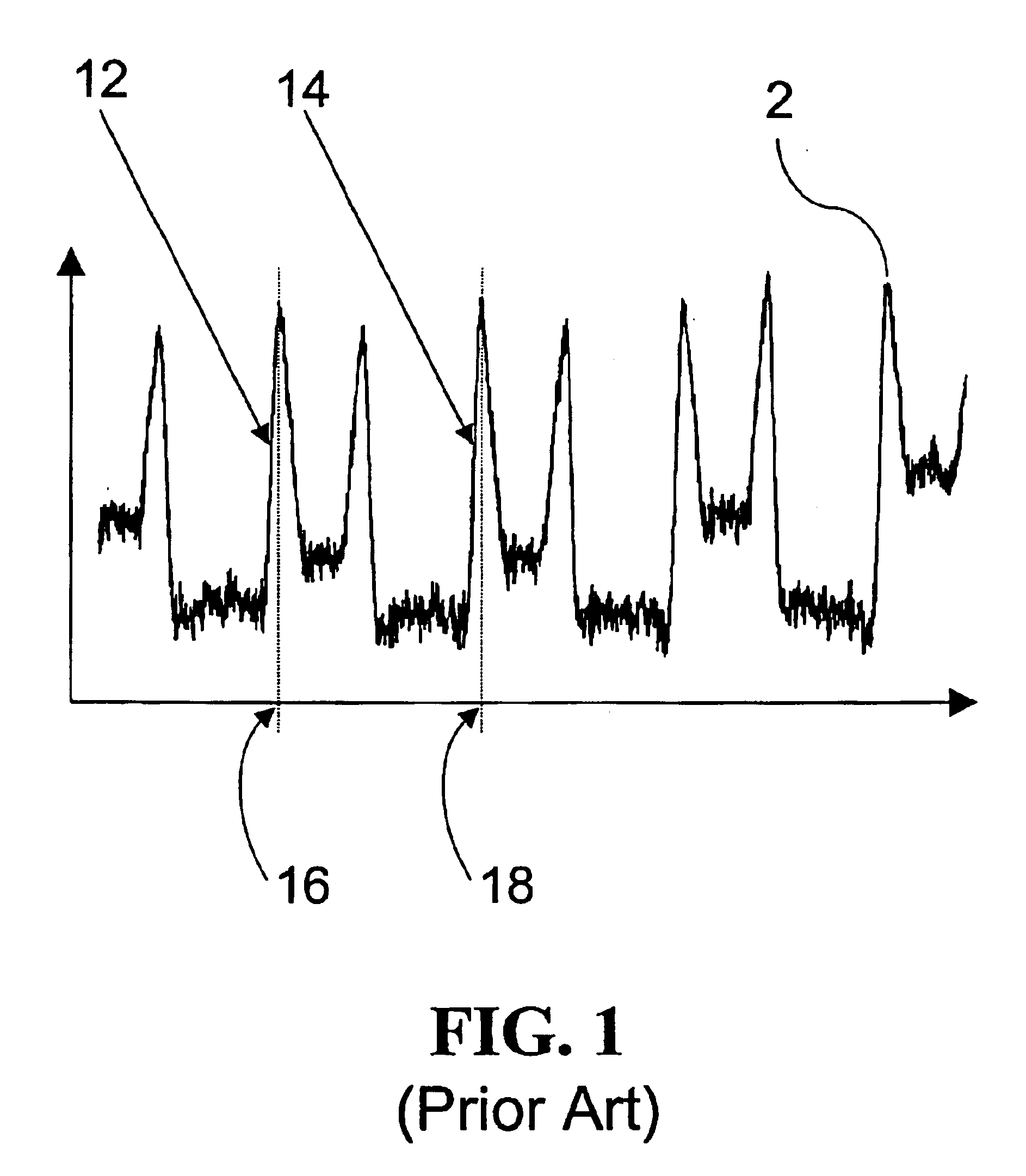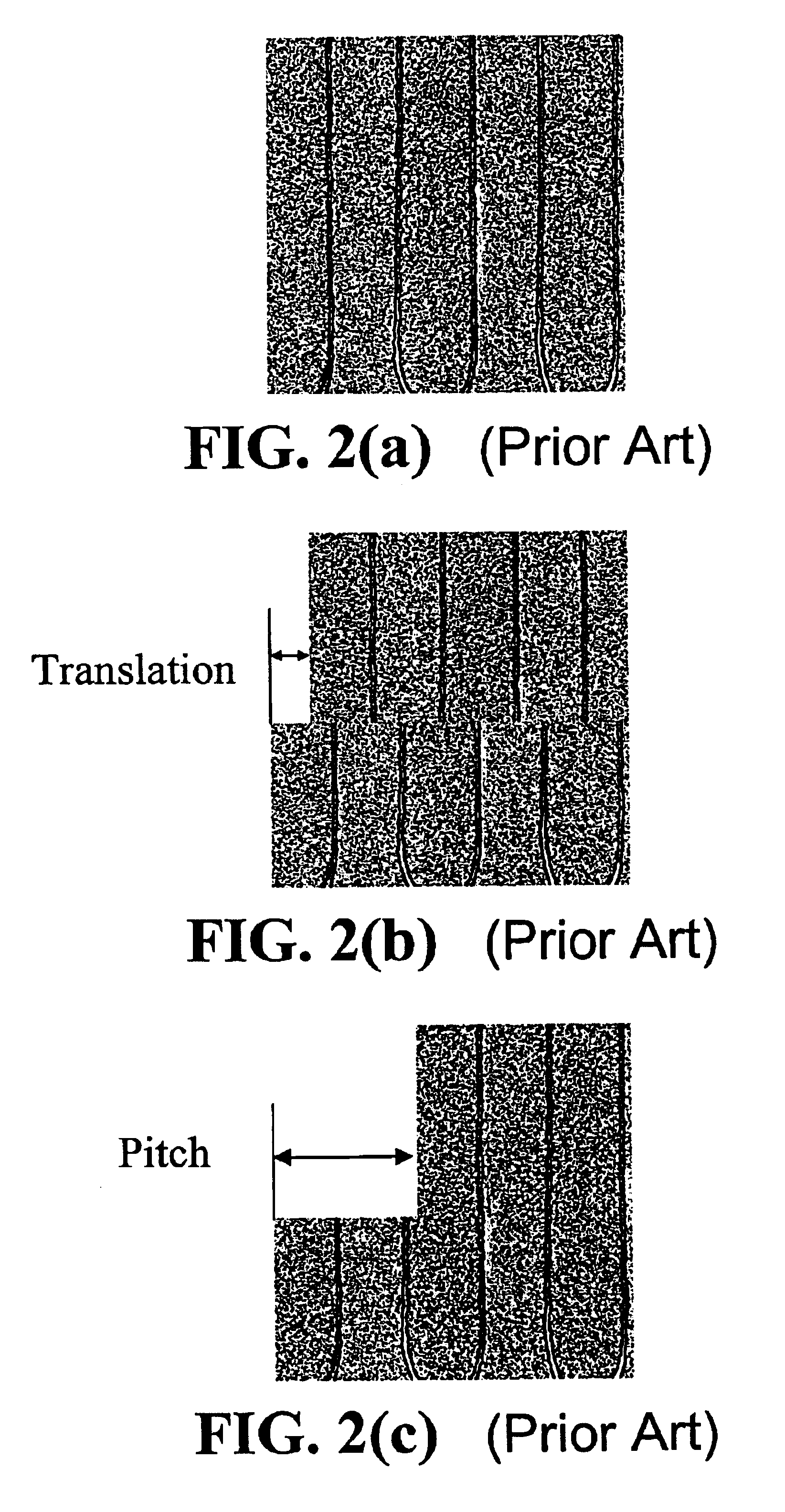Method for measurement of pitch in metrology and imaging systems
a metrology and imaging system technology, applied in the field of metrology and imaging system measurement method, can solve the problems of noise in scan or other electronics, lack of accuracy, biased linewidth measurement, etc., and achieve the effect of reducing any noise in data
- Summary
- Abstract
- Description
- Claims
- Application Information
AI Technical Summary
Benefits of technology
Problems solved by technology
Method used
Image
Examples
Embodiment Construction
In accordance with an embodiment of the present invention, a method for measuring the pitch in any data set obtained from a metrology or imaging system is provided where such method does not rely on assigning edge locations, i.e., it does not involve application of edge detection algorithms. The method can be extended to data sets (images) in any number of dimensions. The data can be obtained from any imaging system such as cameras including CCD; optical microscopes; scanning electron microscopes including top down, tilt, and cross section; scanning probe microscopes including atomic force microscopes and profilometers; scanning ion microscopes; transmission electron microscopes; scanning optical microscopes; numerous other microscopes in analytical instruments, microscopes in lithography systems; defect detection and inspection microscopes whether optical or scanning electron; thermal imaging systems, medical imaging devices such as magnetic resonance imaging, CAT Scan; ultrasound ...
PUM
 Login to View More
Login to View More Abstract
Description
Claims
Application Information
 Login to View More
Login to View More - R&D
- Intellectual Property
- Life Sciences
- Materials
- Tech Scout
- Unparalleled Data Quality
- Higher Quality Content
- 60% Fewer Hallucinations
Browse by: Latest US Patents, China's latest patents, Technical Efficacy Thesaurus, Application Domain, Technology Topic, Popular Technical Reports.
© 2025 PatSnap. All rights reserved.Legal|Privacy policy|Modern Slavery Act Transparency Statement|Sitemap|About US| Contact US: help@patsnap.com



